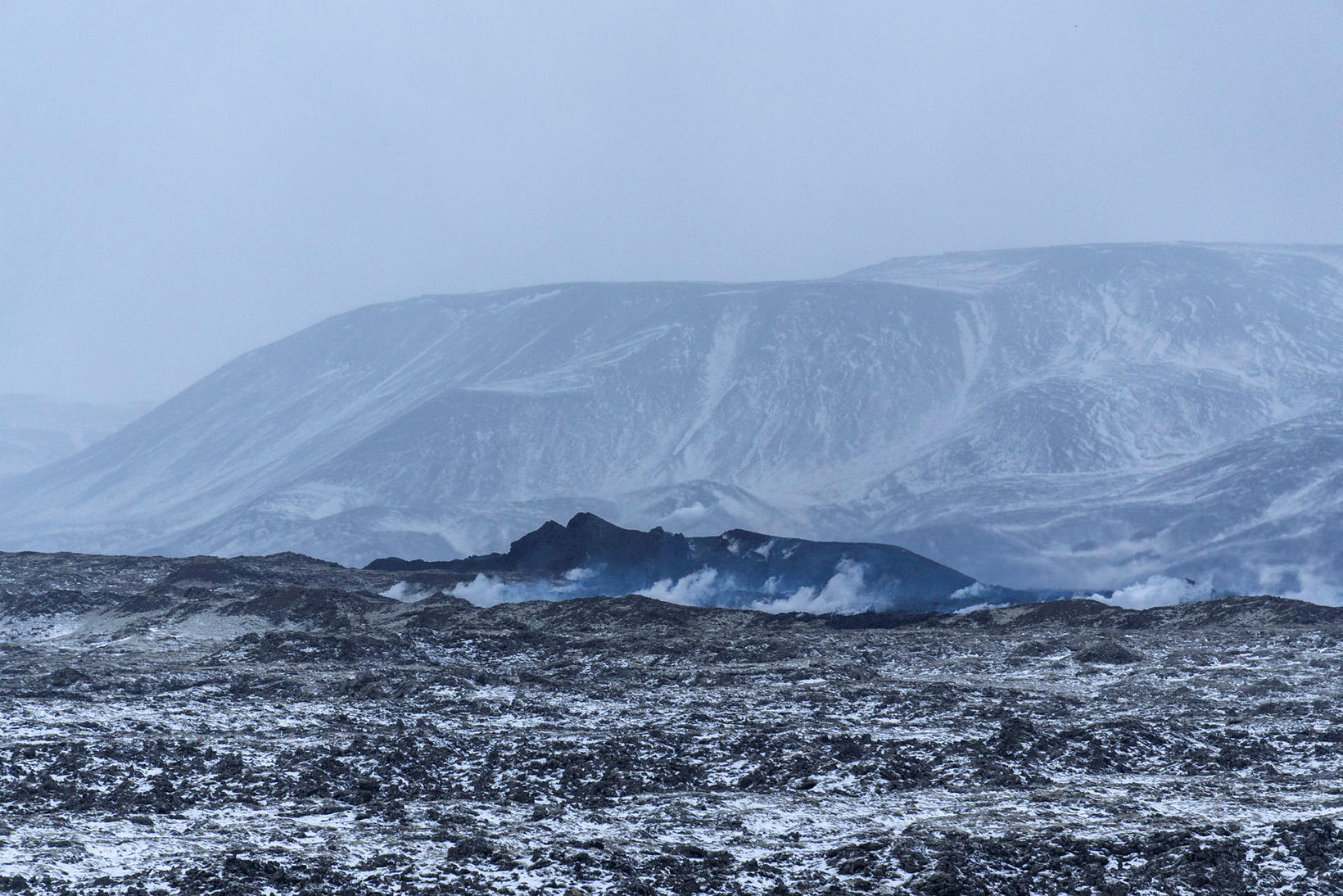Land continues to rise in Svartsengi
There is no slowing down in the land rise near Svartsengi since the eruption faded out. mbl.is/Eyþór
Land continues to rise by about half to one-centimetre per day at Svartsengi. If this continues, the land will reach the same height by January 2nd or 3rd it had reached before the harsh earthquakes on November 10 and the volcanic eruption on December 18.
This is what geophysicist and director of de-formation measurements at the Icelandic Met Office, Benedikt Gunnar Ófeigsson, says.
“The land rise is moving at a very similar rate, as it was before November 10 and December 18. It’s hard to find a specific set of criteria in this and if we can look at that fact as an indication of a reoccurrence of same events. If we look at some other GPS monitors, it can be completely different,” he says.
Land began to rise again shortly after the volcanic eruption began on December 18.
Not expecting larger earthquakes
The events that have occurred on the Reykjanes peninsula during the winter, on the one hand, on November 10 when a magma-run formation occurred under and through Grindavík and on the other hand, the volcanic eruption north of Grindavík on December 18, are different in that there were larger earthquakes on November 10, but on December 18 they were not so large.
The first sign of the eruption was a short, about 90 minute-long earthquake swarm.
When asked if he expects that the next event, whether it be a volcanic eruption or a magma-run, will occur as fast as it did on December 18, he said he is leaning towards that scenario. He thinks it is unlikely that there will be any large earthquakes in the region any time soon, although it is never possible to exclude them.
“I don’t necessarily expect large scale earthquakes, but we might expect a seismic swarm, like the one that occurred before the volcanic eruption. But it’s impossible to determine how long it will last. I think it’s likely that we’ll see a seismic pre-warning and a deformation pre-warning. But it’s really hard to determine what the pre-warning is. It may depend on where it would be,” he says.
“But if we see a seismic swarm like the one we saw on December 18, we assume that something is going on. Then it might start to erupt, but then it also can’t end with an eruption. This varies between events,” he concludes.










